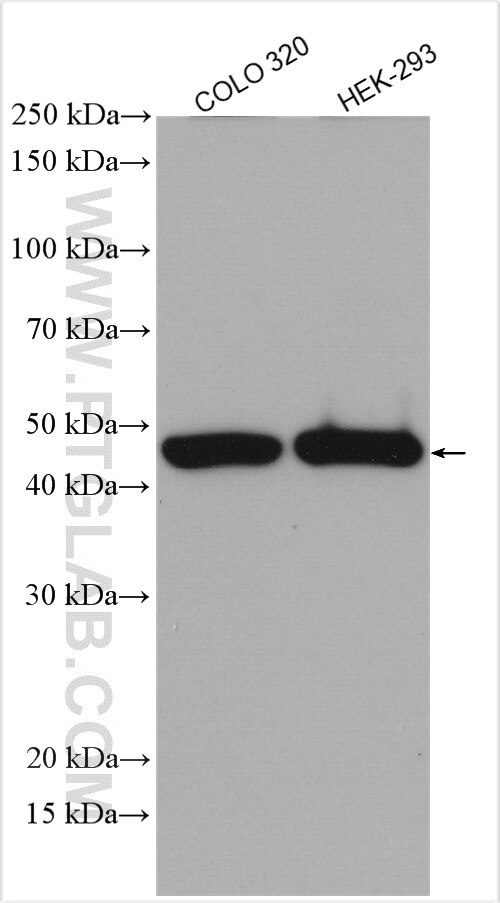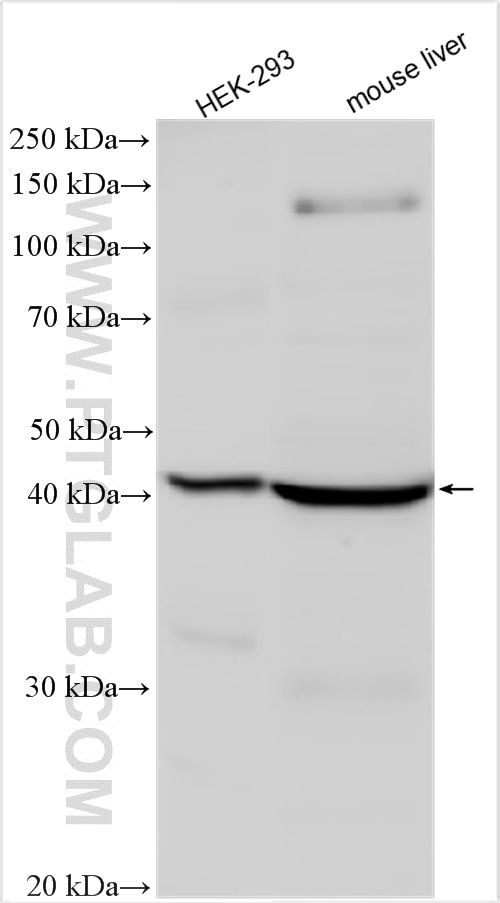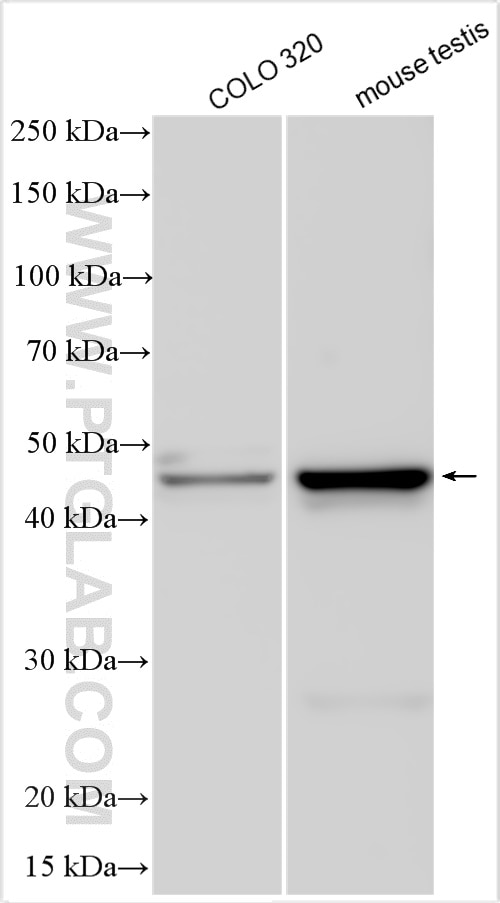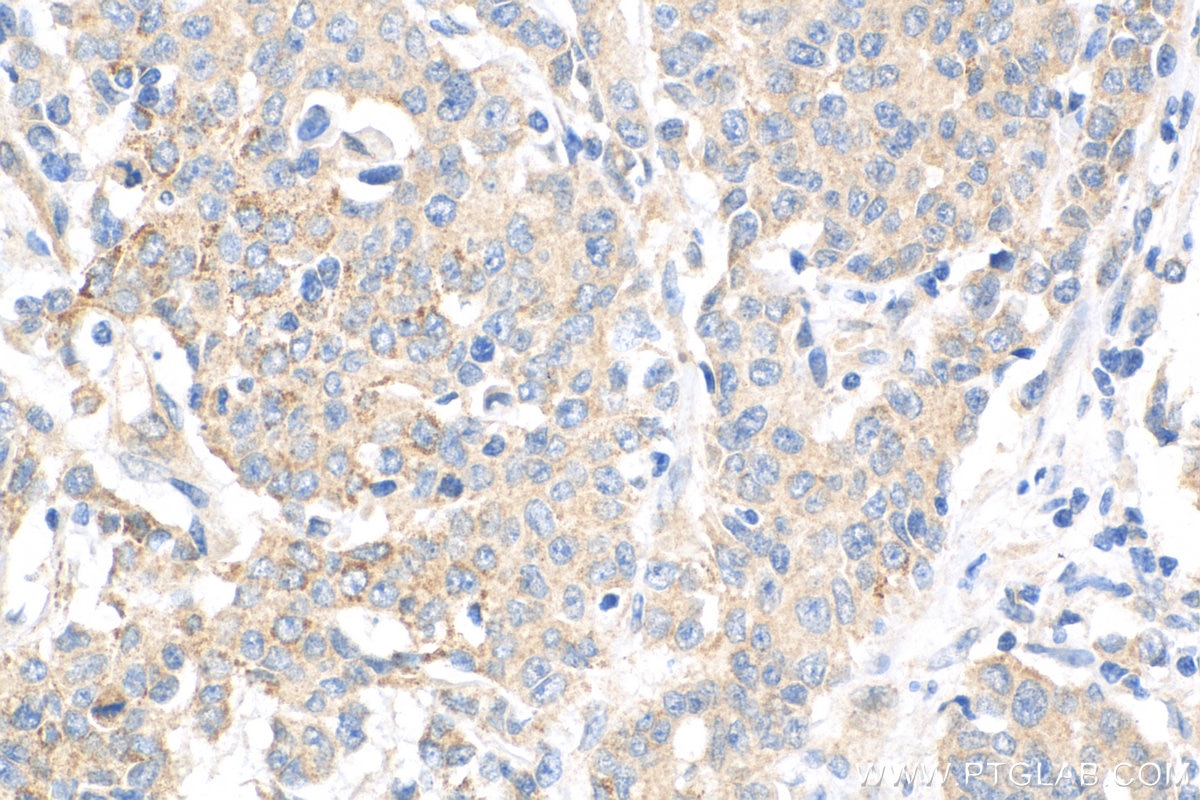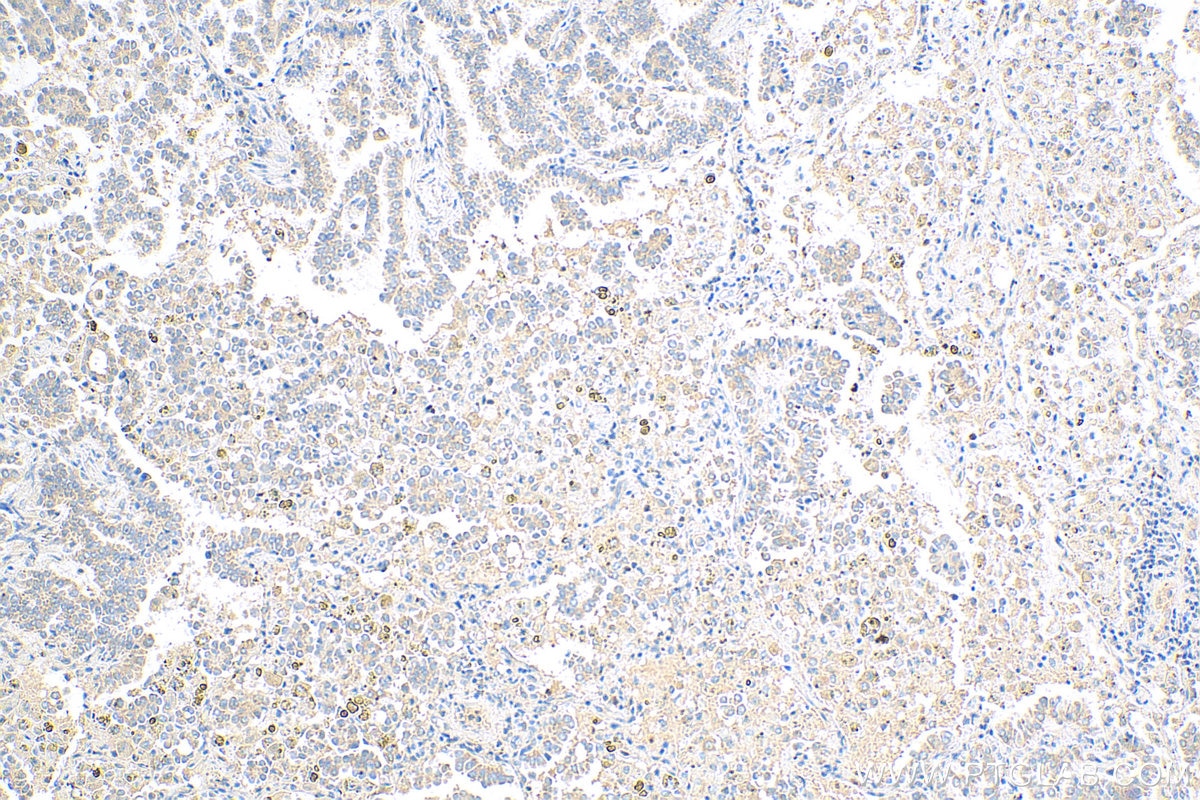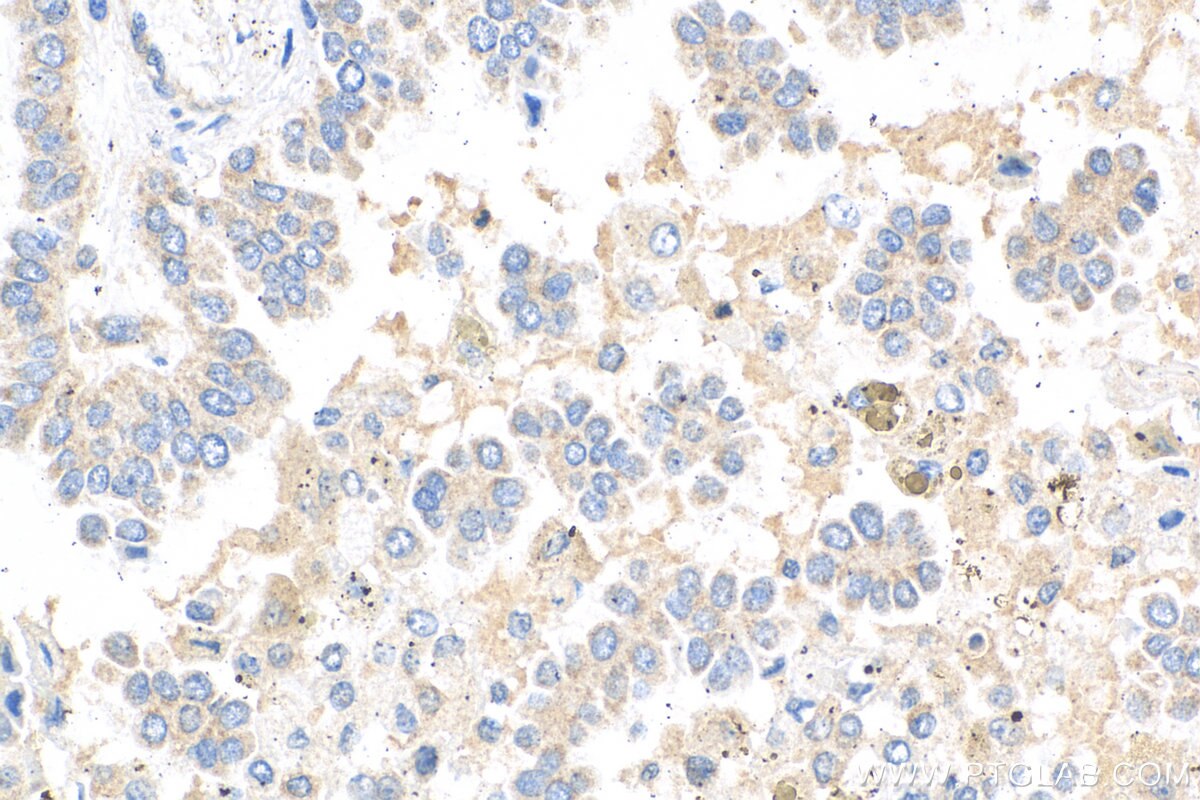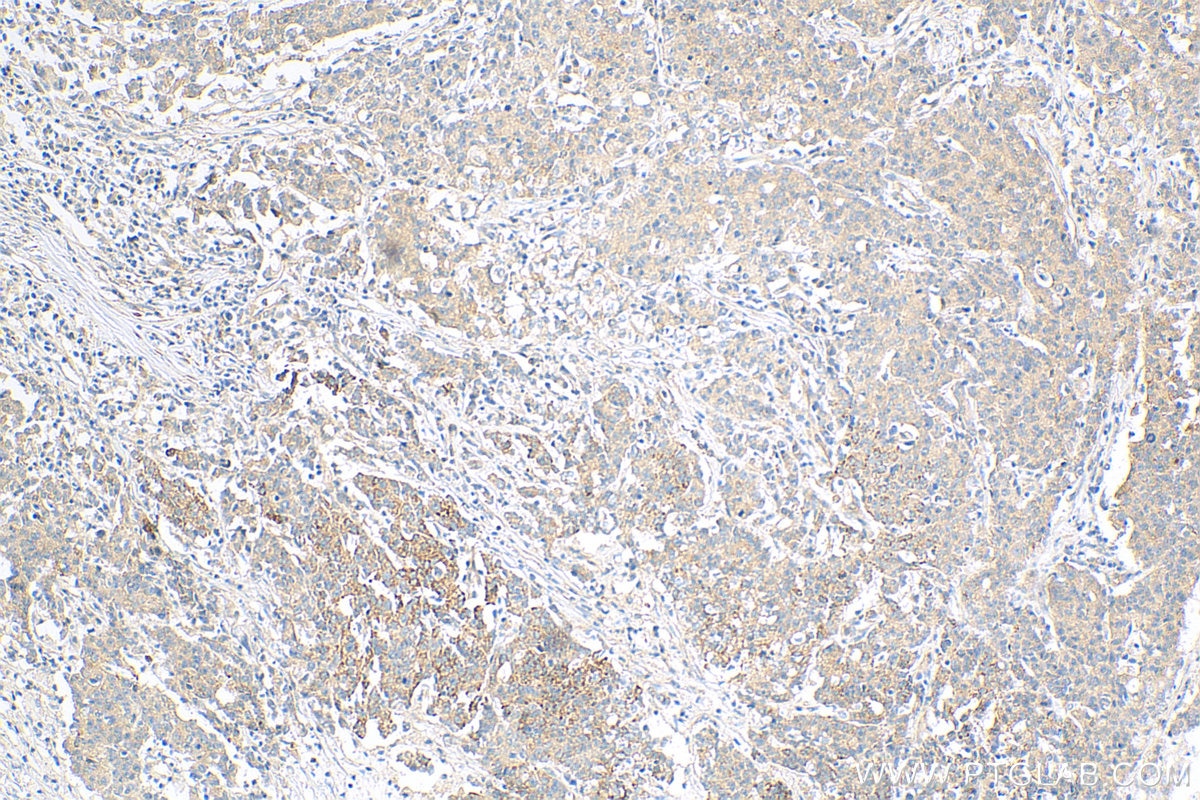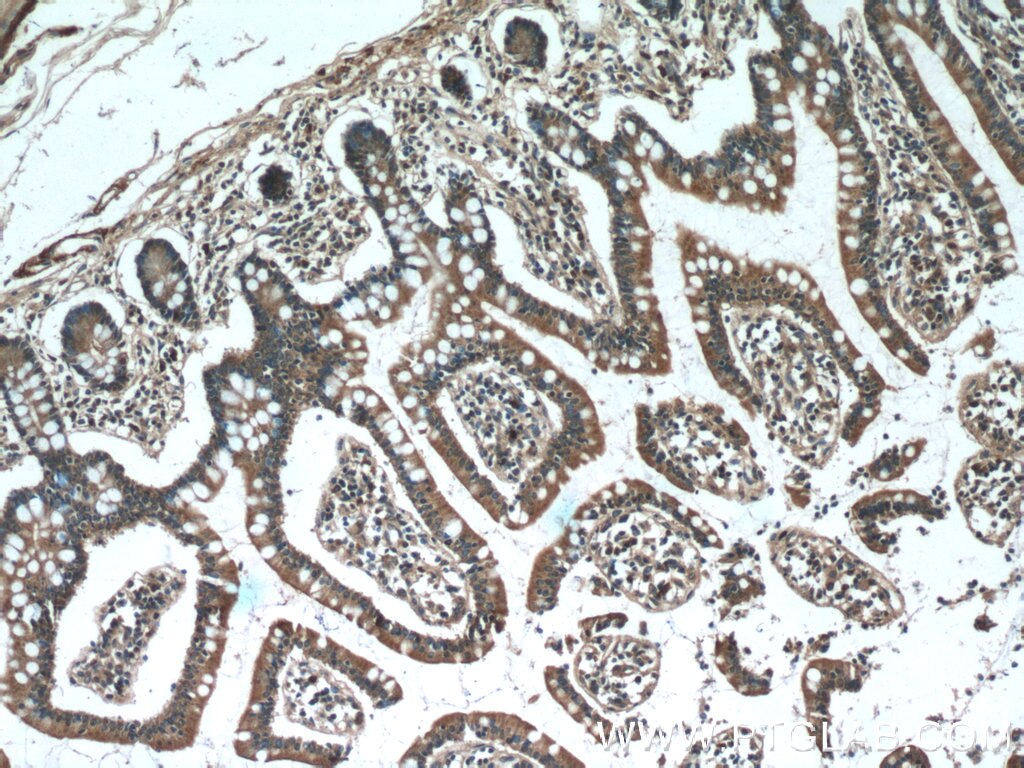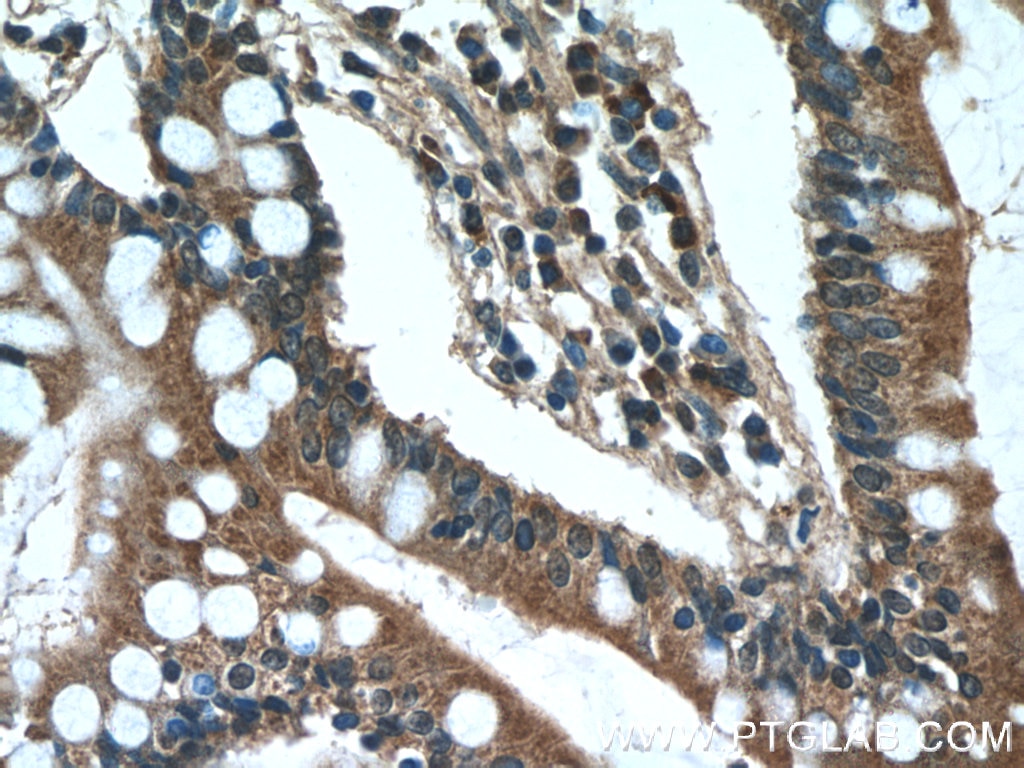- Phare
- Validé par KD/KO
Anticorps Polyclonal de lapin anti-WISP-1/CCN4
WISP-1/CCN4 Polyclonal Antibody for WB, IHC, ELISA
Hôte / Isotype
Lapin / IgG
Réactivité testée
Humain, souris
Applications
WB, IHC, IF, ELISA
Conjugaison
Non conjugué
N° de cat : 18166-1-AP
Synonymes
Galerie de données de validation
Applications testées
| Résultats positifs en WB | cellules COLO 320, cellules HEK-293, tissu hépatique de souris, tissu testiculaire de souris |
| Résultats positifs en IHC | tissu de cancer de l'estomac humain, tissu de cancer du poumon humain, tissu d'intestin grêle humain il est suggéré de démasquer l'antigène avec un tampon de TE buffer pH 9.0; (*) À défaut, 'le démasquage de l'antigène peut être 'effectué avec un tampon citrate pH 6,0. |
Dilution recommandée
| Application | Dilution |
|---|---|
| Western Blot (WB) | WB : 1:1000-1:4000 |
| Immunohistochimie (IHC) | IHC : 1:50-1:500 |
| It is recommended that this reagent should be titrated in each testing system to obtain optimal results. | |
| Sample-dependent, check data in validation data gallery | |
Applications publiées
| KD/KO | See 2 publications below |
| WB | See 6 publications below |
| IHC | See 2 publications below |
| IF | See 1 publications below |
Informations sur le produit
18166-1-AP cible WISP-1/CCN4 dans les applications de WB, IHC, IF, ELISA et montre une réactivité avec des échantillons Humain, souris
| Réactivité | Humain, souris |
| Réactivité citée | Humain |
| Hôte / Isotype | Lapin / IgG |
| Clonalité | Polyclonal |
| Type | Anticorps |
| Immunogène | WISP-1/CCN4 Protéine recombinante Ag12657 |
| Nom complet | WNT1 inducible signaling pathway protein 1 |
| Masse moléculaire calculée | 367 aa, 40 kDa |
| Poids moléculaire observé | 40-45 kDa |
| Numéro d’acquisition GenBank | BC074841 |
| Symbole du gène | WISP1 |
| Identification du gène (NCBI) | 8840 |
| Conjugaison | Non conjugué |
| Forme | Liquide |
| Méthode de purification | Purification par affinité contre l'antigène |
| Tampon de stockage | PBS with 0.02% sodium azide and 50% glycerol |
| Conditions de stockage | Stocker à -20°C. Stable pendant un an après l'expédition. L'aliquotage n'est pas nécessaire pour le stockage à -20oC Les 20ul contiennent 0,1% de BSA. |
Informations générales
WISP1( Wnt-induced secreted protein 1), also known as CCN4, is a secreted, matricellular protein allocated to the CCN protein family. The CCN protein family consists of six, modular structured, secreted proteins ( Cyr61, CTGF, Nov, WISP1, WISP2, WISP3 ). WISP1 may be downstream in the WNT1 signaling pathway that is relevant to malignant transformation. WISP1 is expressed at a high level in fibroblast cells, and overexpressed in colon tumors. Its expression is associated with proliferation, cytoprotection, as well as extracellular matrix production. 18166-1-AP antibody detects the 40-45 kDa protein in SDS-PAGE.
Protocole
| Product Specific Protocols | |
|---|---|
| WB protocol for WISP-1/CCN4 antibody 18166-1-AP | Download protocol |
| IHC protocol for WISP-1/CCN4 antibody 18166-1-AP | Download protocol |
| Standard Protocols | |
|---|---|
| Click here to view our Standard Protocols |
Publications
| Species | Application | Title |
|---|---|---|
Am J Respir Crit Care Med Critical Genomic Networks and Vasoreactive Variants in Idiopathic Pulmonary Arterial Hypertension. | ||
Exp Mol Med WISP-1 induced by mechanical stress contributes to fibrosis and hypertrophy of the ligamentum flavum through Hedgehog-Gli1 signaling.
| ||
Food Chem Toxicol Quinocetone induces mitochondrial apoptosis in HepG2 cells through ROS-dependent promotion of VDAC1 oligomerization and suppression of Wnt1/β-catenin signaling pathway. | ||
Am J Transl Res High expression of WISP-1 correlates with poor prognosis in pancreatic ductal adenocarcinoma. | ||
Oncol Lett MMP12 is a potential therapeutic target for Adamantinomatous craniopharyngioma: Conclusions from bioinformatics analysis and in vitro experiments. |
